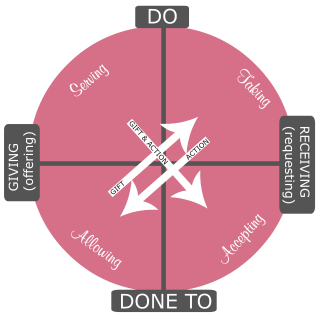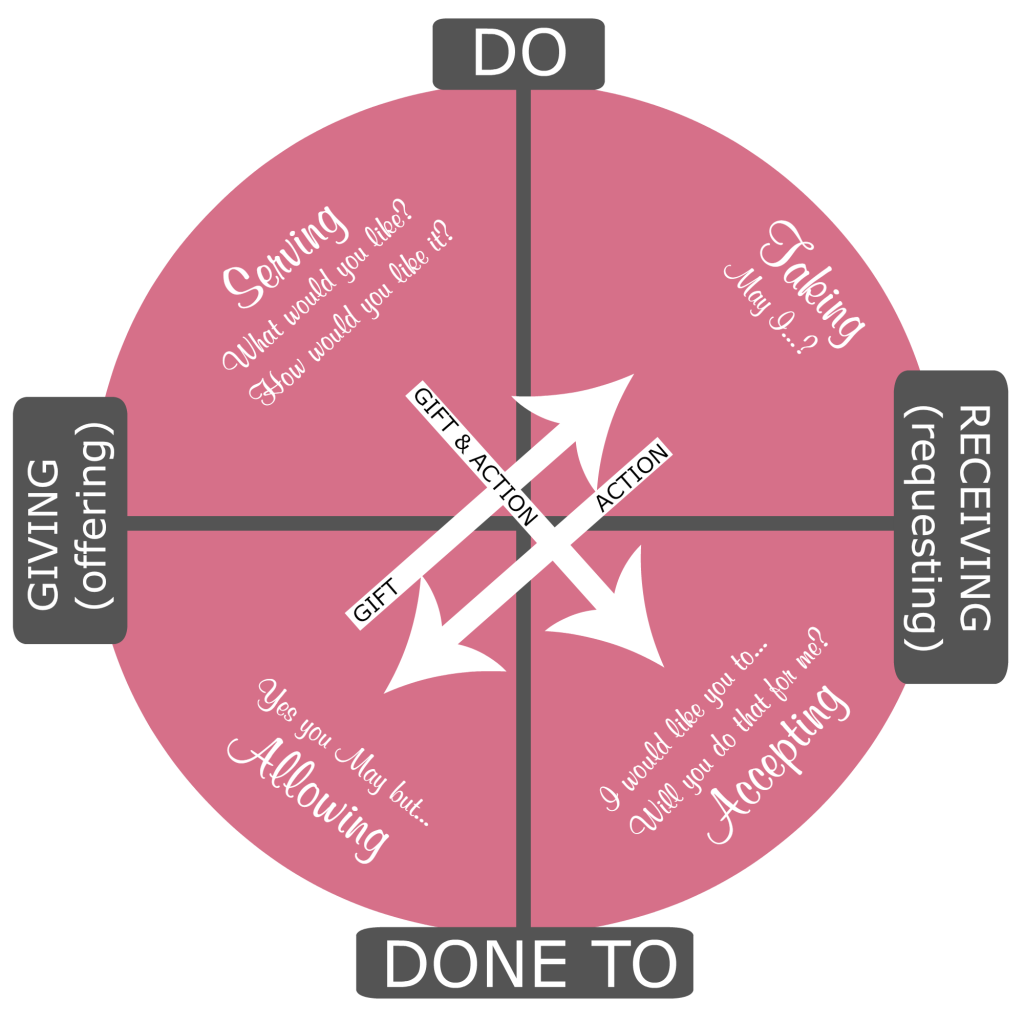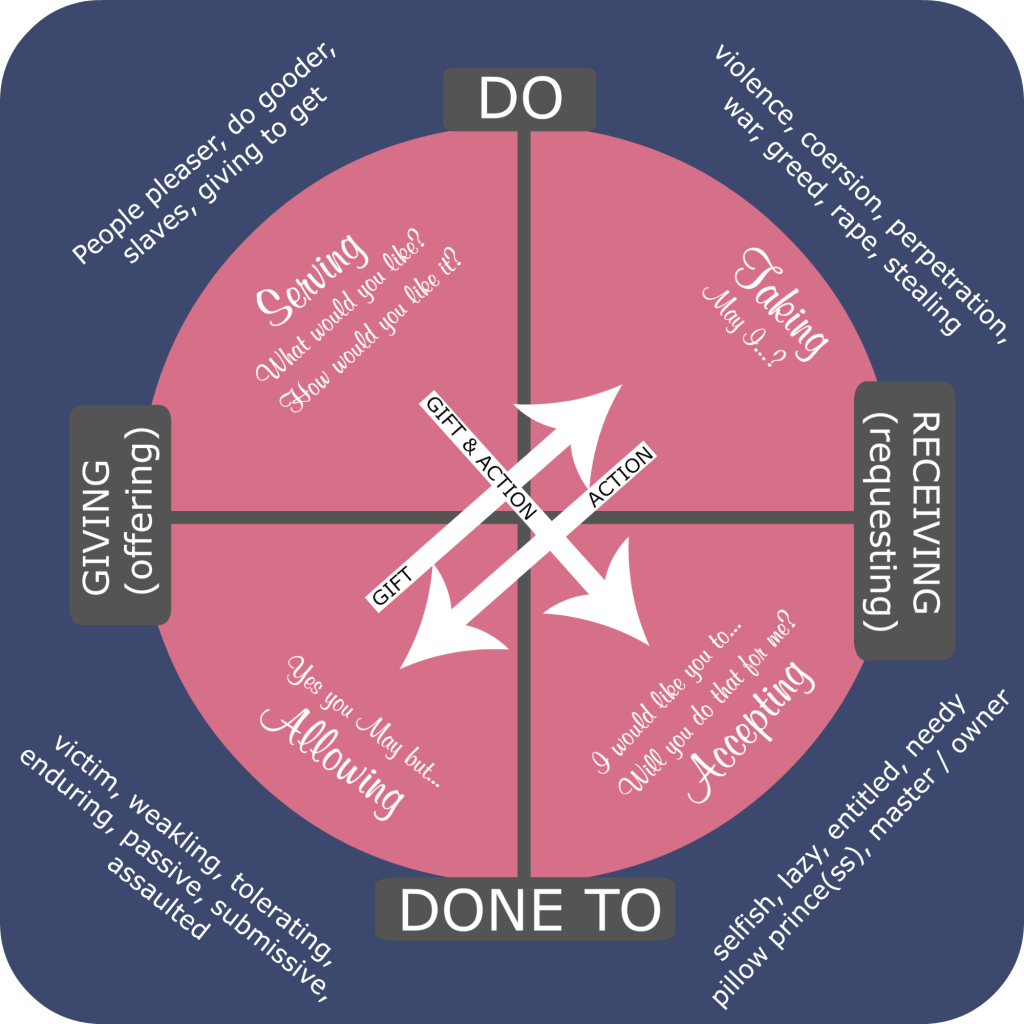 I spent Sunday at a workshop all about touch, pleasure, giving, and receiving – topics I felt I had a pretty good handle on (yep, pun intended). I know how important touch is, so I was eager to go deeper and learn more.
I spent Sunday at a workshop all about touch, pleasure, giving, and receiving – topics I felt I had a pretty good handle on (yep, pun intended). I know how important touch is, so I was eager to go deeper and learn more.
There were several insights, mini and ginormous AHAs alike. Actually, my mind was blown.
The workshop instructor (Janelle Hardy) started the day by asking, “What is receiving?”
We all fumbled around trying to articulate answers before she graciously shared the definition of and a caveat about receiving that we didn’t consider.
She told us that receiving has nothing to do with what you want or permission. It has everything to do with the direction towards you. The direction of what, you ask? We asked the same question.
Time and attention.
Receiving is when time and attention is directed at you (whether you want it or not, and whether or not you have given permission for it).
So it’s good to check in with yourself. Do I want this? Did I ask for this?
Time and attention are the greatest gifts we can give. As conscious receivers, we are seeking the quality of those things.
She went on to further define true giving.
The nature of giving is setting aside your preference to go along with someone else’s. This is very different from giving to get something.
Again: The nature of true giving is setting aside your preference to go along with someone else’s.
Pleasure:
Next came the topic of pleasure. Pleasure is not something we can give or receive. Pleasure is what happens in our nervous systems based on sensory information we take in. We can contribute to another’s pleasure but it their own neuronal activity (based on sensual, cultural, familial, and personal beliefs) that dictates a pleasure response.
We can experience pleasure directly – through our own senses.
Or we can experience it indirectly – this is when we give to get something. Here we seek a specific response from the other person that is meant to bring us pleasure. This is manipulative and not true giving. The agenda puts tremendous pressure on the other to respond appropriately. But what if they want something different?
We then did several experiential exercises where Janelle introduced us to different flavours of giving and receiving – all touch based, but these concepts can be extrapolated to any exchange of time and attention (giving / receiving) – aka any relationship.
Why am I talking about this on a health blog? Well… this blog is about life, and health is just a vehicle to get a thriving, delightful life you love.
I wanted to share this information with you because in my naturopathic practice when I ask my patients about stress (one of the most common root causes of disease) they tell me about their relationships at home, or the bully in their workplace.
For example, the patient who doesn’t know how to tell her husband she wants him to ask her how she is doing and not just say, “Good morning.” Or the one who needs help at home so she doesn’t go insane, but isn’t asking. Or the one who’s boss is racist.
This work can help these people get their power back, reduce stress, and improve health.
We played with language and directives to express our desires, requests, and concerns. And by “played with” I mean we were given extremely precise instructions on how to use language in our experiments.
“May I touch your hand?”
“Yes you may but you may not use feather-light touch.”
“May I touch your hand?”
“No you may not.”
We were not allowed to hint. “Could you…” “If you don’t mind, would you…”
We had to be clear, and quite formal.
“I want you to… will you do that for me?”
Allowing / Taking:
The “May I” questions relate to the flavour of allowing / taking. The allower is the giver – setting aside their preference for the pleasure of the taker who is the receiver. The direction of the time and attention is towards the receiver. In this instance, the allower is being “done to” by the taker. The taker is doing the doing. The gift (time and attention) and action (the doing) are going in opposite directions.
Lust lives in the “taking” quadrant and being desired lives in the “allowing” one. We learned people most long for this dynamnic in their love lives.
Here’s an info graphic to help you understand these dynamics:

Serving / Accepting:
Next came the serving / accepting flavour.
“I want you to gently run your fingers through my hair. Will you do that for me?”
“Yes I will.”
“I want you to use firm pressure to squeeze my trapezius muscles between your fingers and thumb. Will you do that for me?”
“No I will not.”
Here the person stating what they want (the acceptor) is the receiver, and they are being done to by the giver (the server) who is putting aside their preference for the pleasure of the acceptor. Both the gift (time and attention) and the action (the doing) are going in the same direction. The server would ask questions like, “What do you want? How do you want it?”
Imagine serving someone in exactly the way they want to be served. How good would that feel? Or being served exactly the way you want to be. Wouldn’t that be satisfying?
Receiving:
In each instance, the ability of a receiver to relax depends on the knowledge that they have a choice about what’s being done to them.
It is the responsibility of the giver to diligently find and fiercely respect and defend the limits of the receiver.
Have a friend who seems awkward about hugging? Why not ask them:
May I give you a hug? (This is the taking / allowing dynamic. The person is asking for his / her own benefit.)
Would you like a hug? (This is serving / accepting dynamic. Here the person is asking for the other’s benefit.)
Absolutely, 100%, receiving CAN be about what is wanted and not just what is okay.
Of course there are shadow sides to all these quadrants. When one is pathologically engaged in one segment OR
afraid of going into that quadrant OR
being perceived as being in that quadrant.

Interestingly in (hetero)relationships (I only use this example because that’s what we discussed in class) most men spend most of their time in the serving quadrant – because culturally they are afraid of being in taking quadrant because of it’s shadow side. They are serving, and they are assuming their partner is accepting.
However, women spend most of their time in allowing quadrant – thinking that their partner is taking.
Both men and women think they are GIVING, and that their partner is receiving.
Getting clear on the difference between the request and the offer would clear up 90% of relationship difficulties.
Two people giving can’t work. We did another physical demo to illustrate this point – and you can do it too! Hold hands with a loved one or buddy and both attempt to use that hand to massage the other person’s hand. It’s like two pigs wrestling under a blanket. It just doesn’t work.
There needs to be an ebb and flow of giving and receiving. Taking, allowing. Serving, accepting.
I’d love to hear any insights you have about these concepts in the comments below.
To your thriving, healthy, delightful life,









